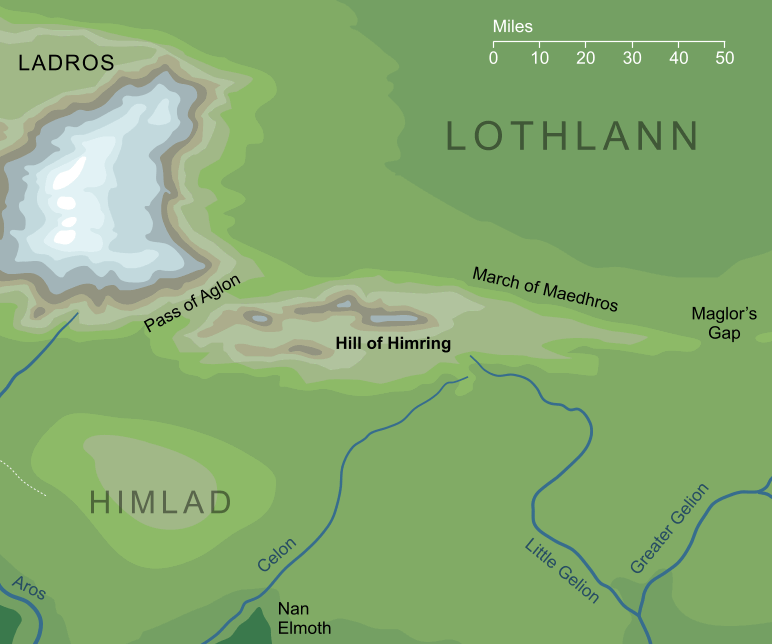- Cities and buildings
- Fields, plains and deserts
- Forests
- Hills and mountains
- Islands and promontories
- Lands, realms and regions
- Rivers and lakes
- Seas and oceans


 |
||||||||
|


Which personality type are you?
Take the Free mydiscprofile Personality Test to discover your core personality and your ideal job.   Which personality type are you? |
|
Dates
Maedhros founded his fortresss here soon after I 7;1 presumed abandoned at the end of the First Age2
Location
The northern borders of Himlad, on the western edge of the March of Maedhros
Race
Division
Family
Passes
The Pass of Aglon ran to the northwest of the Hill
Pronunciation
hi'mring
Meaning
Other names
Indexes: About this entry:
|

The History of Middle-earth volume III
The Lays of Beleriand The Lay of Leithian X 2994-2995 (late emendation) To the south of the wide plain of Lothlann, the northern mountain-fences of Beleriand gave way in the east to a lowland region. The mountains ended in a jumble of low hills, surrounding a single bare hill with a broad, flat summit: the Hill of Himring. From this cold place sprang the river known as Little Gelion, one of two sources that came together to form the long river Gelion that bordered East Beleriand. After the Return of the Noldor, Maedhros the eldest son of Fëanor came to the hill, and built the greatest of his citadels on its flat summit. After this time, the guarded lands around the Hill of Himring became known as the March of Maedhros. That citadel stood for many centuries, and withstood the onset of the Dagor Bragollach, that swept away many of the Elves' forces and defences. It was apparently destroyed in the War of Wrath: at least, by the end of the Third Age, all that remained of the Hill of Himring was a solitary island, Himling, lying off the northwest coasts of Middle-earth. Notes
See also...Elves of Beleriand, Maedhros, Pass of Aglon, Sons of Fëanor, The Ever-cold, Tol Fuin Indexes: About this entry:
For acknowledgements and references, see the Disclaimer & Bibliography page. Original content © copyright Mark Fisher 2003, 2020. All rights reserved. For conditions of reuse, see the Site FAQ. Website services kindly sponsored by Discus from Axiom Software Ltd.Discus reports have billions of combinations based on our advanced reporting engine of more than a million components. |